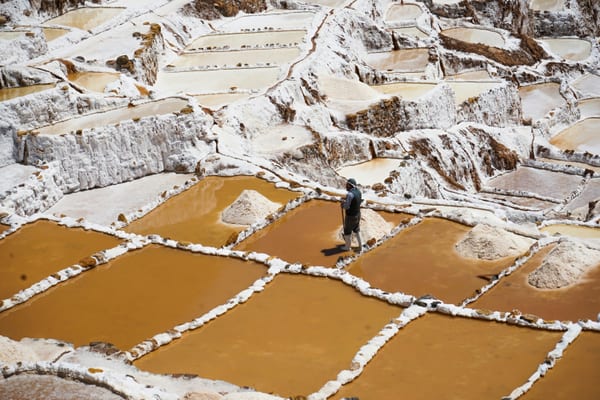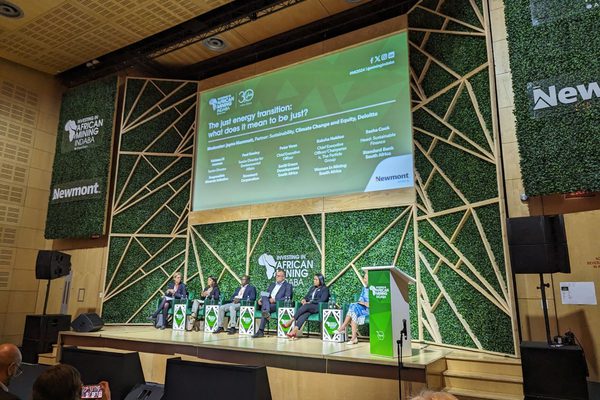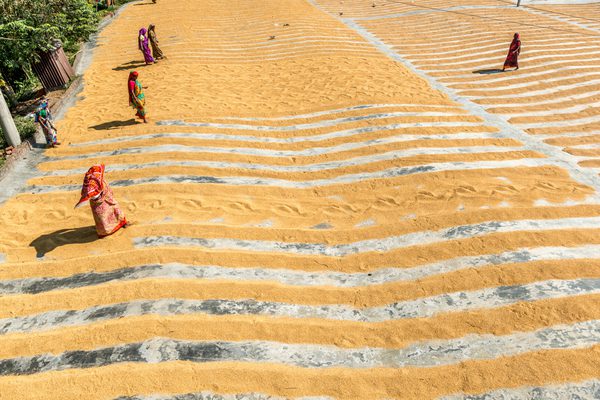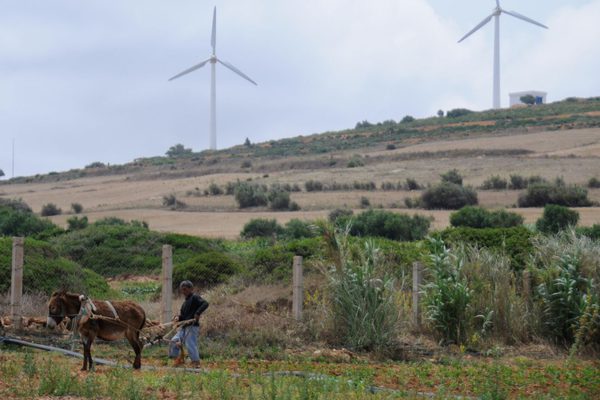The global demand for copper and the human rights challenges ahead
28 June 2021
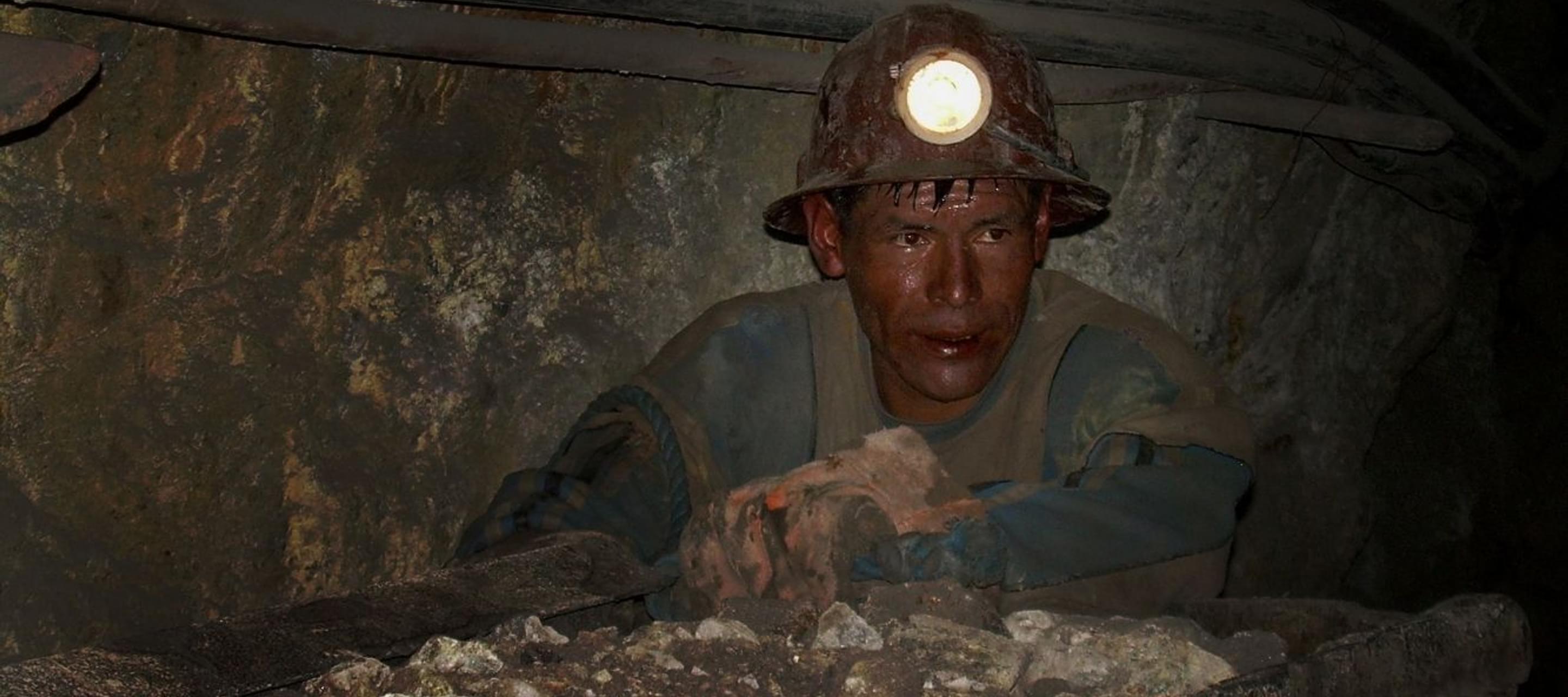
Achieving net-zero global emissions and sustainable energy supplies will require unprecedented quantities of copper over the coming decades due to the growth in infrastructure, the built environment, and the transition to the green economy. Some sources predict a 300% growth in demand for copper – from the current global market of 20 million tonnes per year to 60 million – by 2050. This represents more copper than has ever been used by humanity since the start of the Bronze Age, and will place pressure on existing sources as well as new exploration on land in wildernesses such as the Arctic and at sea. Such surges in demand bring with them their own social and environmental risk throughout the whole value chain.
On May 11th 2021 IHRB, along with the Swiss Federal Department of Foreign Affairs and the Copper Mark, co-hosted an expert discussion to explore human rights due diligence challenges across the copper value chain. The event, held under the Chatham House rule, brought together 50 representatives of business, civil society, government and academia for an open exchange of the challenges and how best to meet them, from mines to smelters, trading to downstream applications.
Opening remarks were offered from Barbara Schedler Fischer, Deputy Head of the Peace and Human Rights Division of the Swiss Federal Department of Foreign Affairs, Michèle Brulhart, Executive Director of the Copper Mark, and John Morrison, CEO of IHRB. Speakers included Matthew Chamberlain, CEO of The London Metal Exchange (LME), Deanna Kemp, Director of the Centre for Social Responsibility in Mining, Benjamin Katz of the OECD’s Responsible Business Conduct Unit, Jamie Williamson, CEO of ICoCA, and independent expert and IHRB Research Fellow Philip Goodswen.
The discussion covered the four main areas below - the following sections summarise key takeaways from the discussion:
- Supply constraints
- Due diligence challenges
- Mass balance vs traceability
- Artisanal mining
Supply constraints
Research by the Sustainable Minerals Institute shows that of the top 300 undeveloped copper orebodies globally:
- 47% are located on, or in close proximity to, Indigenous Peoples’ lands;
- 65% are in high water risk areas; and
- 65% are located in, or in close proximity to, biodiversity conservation areas.
This predicted supply gap in copper will likely result in increased pressures on land and water use, as well as adverse impacts on local and indigenous communities, as global mining activities ramp up to meet the surge in demand. Recycling is likely to increase, but not enough to keep pace.
Further, the increasing need to mine ever more complex orebodies at greater depth will create more waste and a huge increase in tailings (a toxic output of extracting the copper that requires effective management to dispose of safely), raising significant environmental and human rights risks.
Producing vastly expanded amounts of copper on the basis of business-as-usual poses significant risks. Responsible mining practices must be scaled up urgently, focused on avoiding harm to local people and environments at the source of copper supplies and throughout the supply chain.
Certification and due diligence options and issues
The Copper Mark, London Metal Exchange, OECD Due Diligence Guidance, and Swiss government-sponsored Guidance for Commodity Traders on implementing the UN Guiding Principles on Business and Human Rights (UNGPs), all provide frameworks and tools to help businesses manage and mitigate adverse human rights impacts.
However, the current state of play demonstrates that there are still many issues to be addressed to improve human rights due diligence in the copper value chain:
- Recent research shows that over half of companies now have responsible sourcing policies, but implementation efforts are lagging behind.
- Multiple certification schemes haven't necessarily led to on-the-ground, community-level change. The Copper Mark is working to build relationships with community-based organisations, some of which have limited knowledge of certification schemes and how they can make a difference. Additional efforts are needed to understand what type of data communities need from companies to understand impacts on pollution/water quality, local security concerns, amongst others. There is also a need for trust-building due to past conflicts between industry and civil society in many copper-producing countries.
- One of the main drivers of responsible sourcing is demand from downstream users. In this regard the copper industry is not slower than similar efforts on other metals, but the metals sector in general has not advanced on due diligence implementation at rates seen by consumer commodities (such as the Fair Trade Mark for consumer products and the Responsible Labor Initiative for consumer electronics).
- The London Metal Exchange is taking steps to increase disclosure as far down the supply chain as possible so individual actors can take a view on what they consider acceptable practices, but to date such transparency has been relatively poor.
- Transparency is not the only part of due diligence, and it is not a substitute for it. Due diligence cannot become a tick-box exercise; what is needed is continuous engagement in order to effect long-term change and improvement.
- There is not a huge amount of incentive for commodity traders to carry out human rights due diligence (even a well thought out supply chain will struggle with trading), but for the commercial end user there could be value in going back if enough pressure is brought to bear.
- Traders should consider a range of potential risk areas in their due diligence initiatives, including mine assessment, transportation, sourcing of chemicals, storage issues, security-related abuses, shipping, rights of workers at sea, and financing (all of which are addressed in the UNGPs Guidance for Commodity Traders).
- While some features of the business, such as spot trading, make due diligence particularly challenging, traders do have significant leverage. It should be acknowledged that while some will trade with anyone, most traders are only doing business with counterparts they know. Therefore, traders are or should be aware of the supply chain due diligence effectiveness of those relationships.
Mass balance v traceability
A central challenge is determining how copper supplies can be more effectively traced from mine to end user. Although some commodities such as cotton are mass balance – i.e. bought off the global market in correlation to that supplied – others, such as diamonds, have near 100% traceability.
- It was noted that there has been a rapid increase in technology-based tracking projects and there are some tracking initiatives for copper which should be welcomed. It is hoped that improved tracking technologies and competitive innovation will lead to better outcomes.
- There is an argument that more granular-level traceability goes hand in hand with robust monitoring to measure impacts of copper operations in and around mining affected communities.
- The challenges and rigidity of pure identity preservation approaches (ie traceability methods) underline the value of progressive, risk-based due diligence cascaded up the supply chain - to all suppliers within the chain.
- For true traceability, dedicated infrastructure may be required (such as for palm oil, with its new plantations, separate ports, and ships purely for organics for instance), as are end users who are willing to pay premiums for such assurances.
- The most urgent issue remains how risks to people on the ground are assessed, recorded, and avoided/mitigated. Improved traceability is only one, arguably small, component of more effective due diligence in the copper supply chain.
Artisanal mining
Related to the issue of mass balance is artisanal mining (ASM) as a source for copper. In the Democratic Republic of the Congo (DRC), an estimated 10,000 tonnes of raw copper are produced by ASM every month (a small proportion of the annual total copper mined, but nonetheless a significant number of miners). And the DRC is also the 5th largest copper producer worldwide. ASM is known for its ability to provide an elastic supply (i.e. it is responsive to demand), but it must be considered in terms of both risks to people and in relation to development opportunities for ASM communities:
- ASM tends to be more prevalent in high-risk areas and while ASM volumes are low for copper, the grades mined in ASM are much higher. ASM is viewed positively by some, providing increased employment opportunities that can support local livelihoods – particularly in high-risk areas.
- There are various risks involving relations between large-scale mining (LSM) and artisanal- or small-scale mining (ASM), and a number of projects have demonstrated the potential for improved ASM-LSM cooperation that can bring mutual benefits and be a positive force of development.
- Large scale miners must engage with legitimate ASMs to improve practices– this is not a solution, but it is a starting point.
Consent and engagement in high-risk areas
10% of worldwide copper originates in fragile environments; 50% of undeveloped copper reserves and resources are located in politically fragile jurisdictions. Preventing and mitigating human rights harms, as well as ensuring effect remedies for those adversely affected, represents the foundation of any social licence for an expansion in copper mining and production:
- Due diligence is particularly important in this context, but it is also important for companies to stay engaged in areas deemed to be high risk, not least because of the importance of economic supply to the market.
- There is a negative impact of de-risking strategies on the low-income economies (i.e. withdrawing business) – disengaging entirely is punishing, so it is important for businesses to continue conducting business in high-risk areas where possible and collaborate/use leverage to ensure/improve human rights.
- Particularly due to the impacts of COVID-19, there needs to be greater resilience in value chains for high-risk communities.
- The rights of indigenous peoples, in particular free, prior, and informed consent (FPIC), must be central to any new ventures and any current operations impacting indigenous lands.
- Existing approaches to security and human rights in the extractive sector, such as the International Code of Conduct for Private Security Companies and the Voluntary Principles on Security and Human Rights, should be mainstreamed within existing and future copper mining ventures.
The organisers thank all the participants for the useful discussion and look forward to engaging further on these issues with a wider range of organisations and perspectives. More information and resources are available below.
Useful Resources
- The Commodity Trading Sector: Guidance on Implementing the UNGPs (https://www.ihrb.org/focus-areas/commodities/the-commodity-trading-sector-guidance-on-implementing-the-ungps)
- OECD Due Diligence Guidance for Responsible Supply Chains of Minerals from Conflict-Affected and High-Risk Areas (https://www.oecd.org/corporate/mne/mining.htm)
- The Copper Mark (https://coppermark.org/)
- Business & Human Rights Resource Centre Transition Minerals Tracker (https://trackers.business-humanrights.org/transition-minerals/)
- LME Sustainability (https://www.lme.com/en-GB/About/Responsibility/Sustainability)
- ICoCA (https://icoca.ch/)

